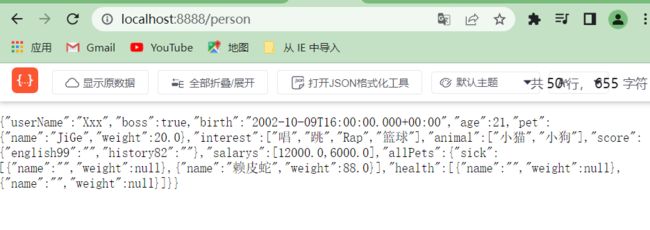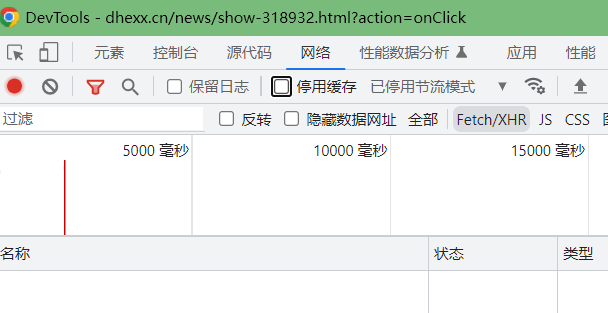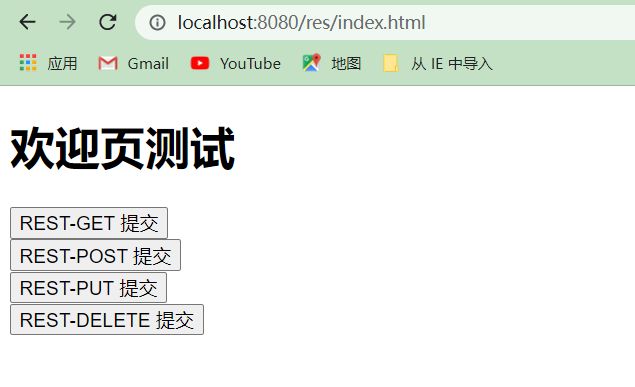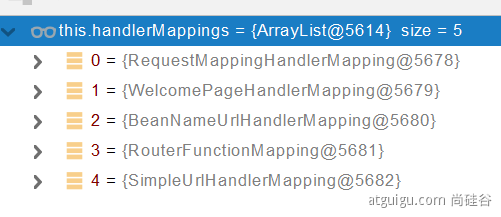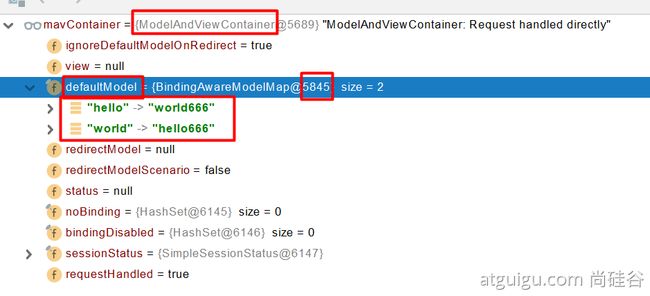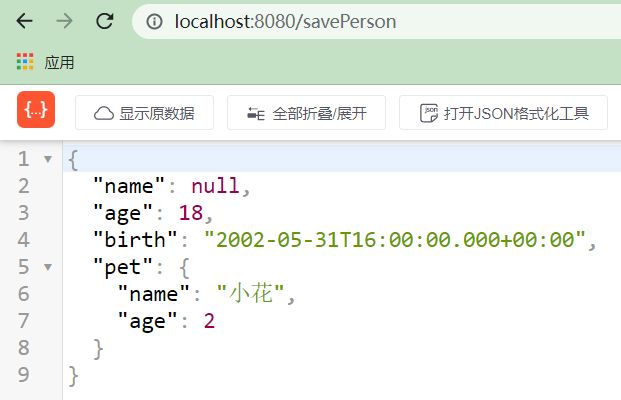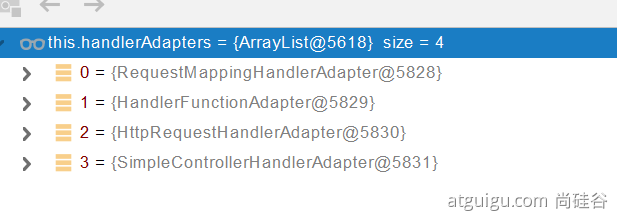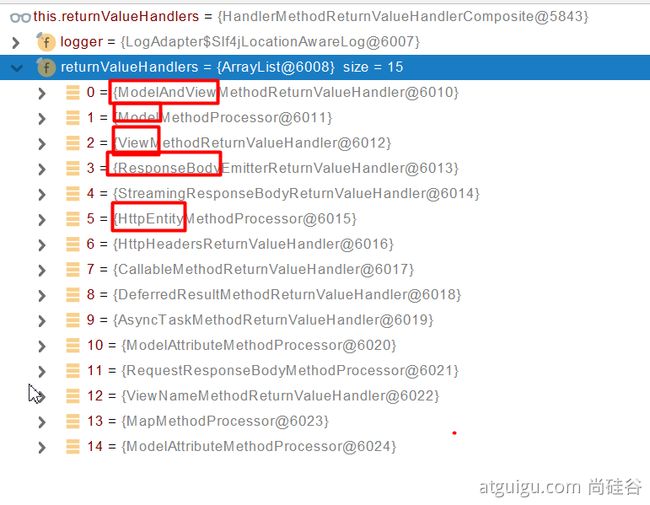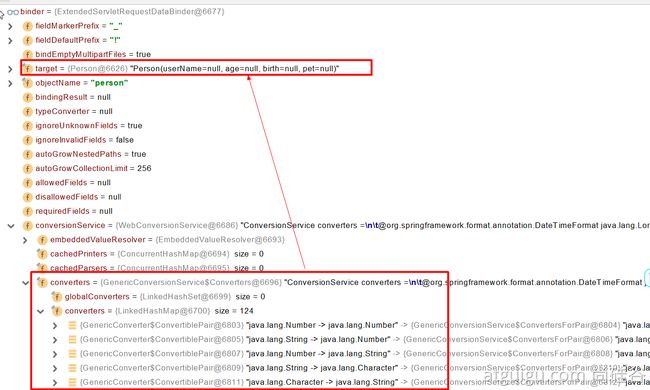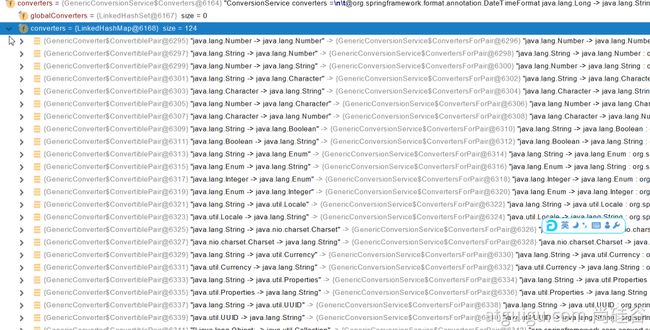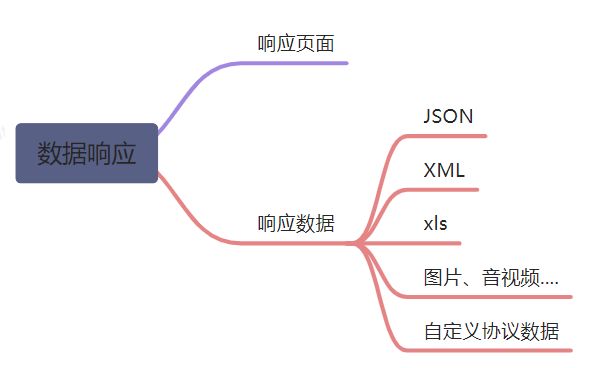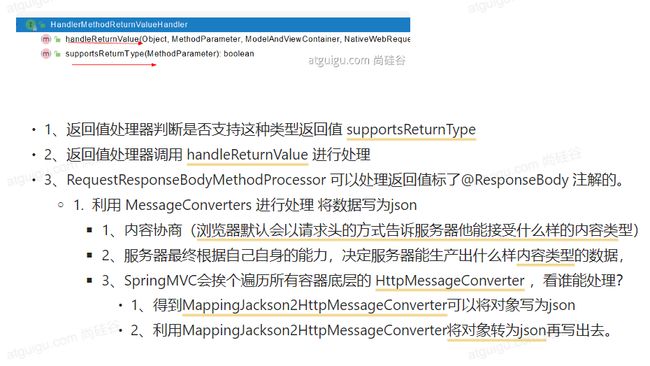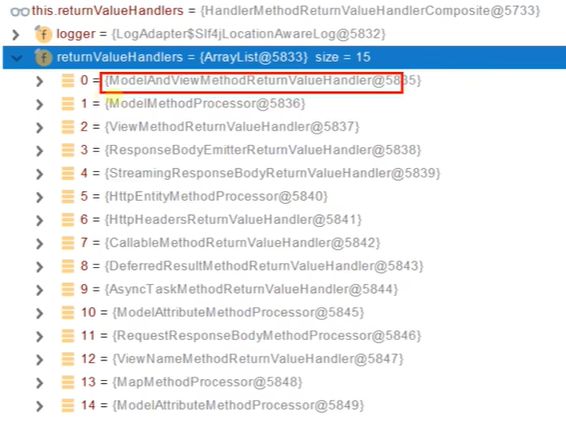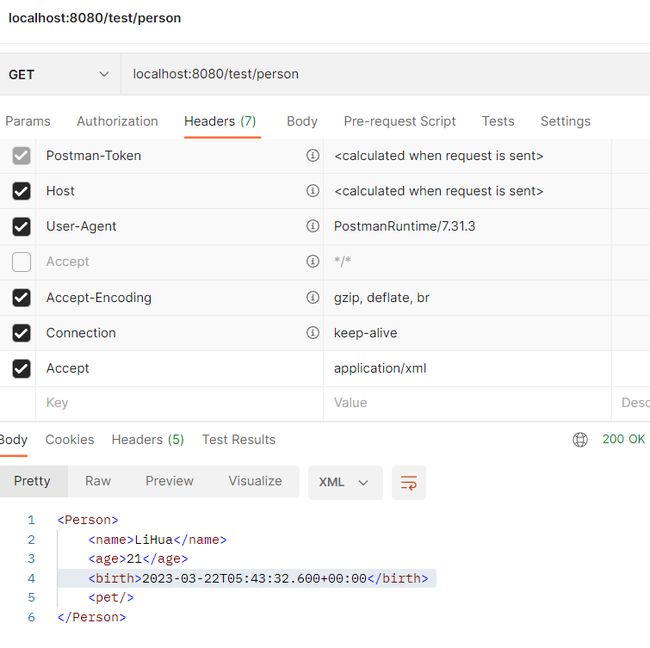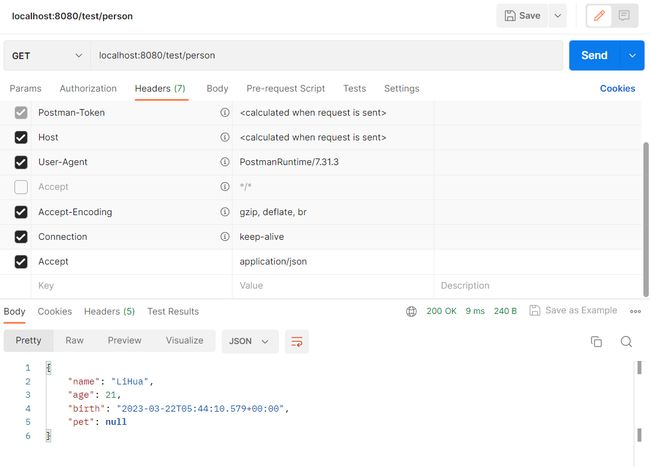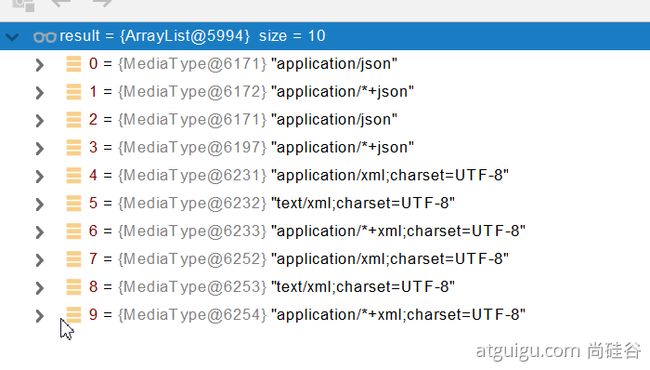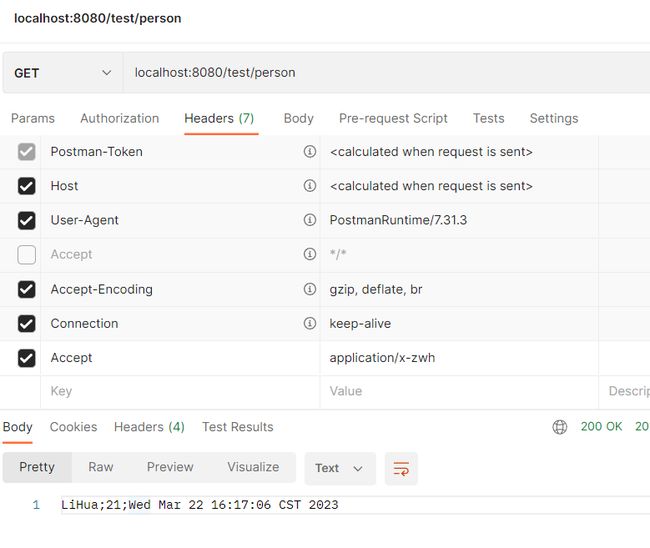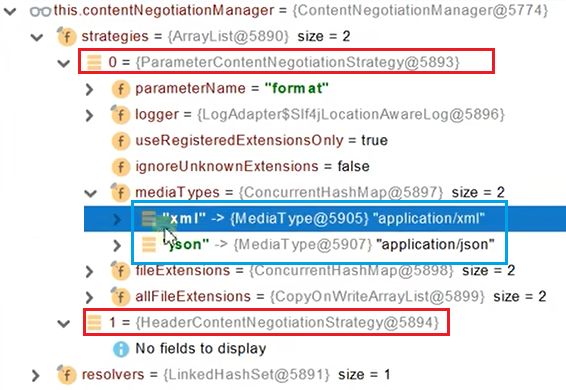【零基础入门SpringBoot2】—— 核心功能_配置文件与Web开发
一、配置文件
1、什么是 yaml ?
-
YAML 是 “YAML Ain’t Markup Language”(YAML 不是一种标记语言)的递归缩写。在开发的这种语言时,YAML 的意思其实是:“Yet Another Markup Language”(仍是一种标记语言)。
-
适用于以数据为中心的配置文件
2、基本语法
- 普通的
key: value, kv之间有一个空格 - 区分大小写
- 使用缩进表示层级关系
- 缩进不用tab
- 只允许用空格
- 空格数不重要,只要相同层级的元素左对齐即可
- 用 # 表示注释
- 字符串无需加引号,如果要加分为两种情况
- 单引号不会转义,会将 \n 作为字符串输出
- 双引号会转义,会将 \n作为换行输出
3、针对每类数据类型的语法
(1)字面量:单个的、不可再分的值。 date、boolean、string、number、null
k: v
(2)对象:键值对的集合。map、hash、set、object
# 第一种写法
k: {k1:v1,k2:v2,k3:v3}
# 第二种写法
k:
k1: v1
k2: v2
k3: v3
(3)数组:一组按照次序排列的值。 array、list、queue
# 第一种写法
k: [v1,v2,v3]
# 第二中写法
k:
- v1
- v2
- v3
我们通过一个案例来演示,具体在yaml文件中如何对属性值进行配置
- 实体类
package com.atguigu.boot.bean;
import lombok.Data;
import lombok.ToString;
import org.springframework.boot.context.properties.ConfigurationProperties;
import org.springframework.stereotype.Component;
import java.util.Date;
import java.util.List;
import java.util.Map;
import java.util.Set;
/**
* @author Bonbons
* @version 1.0
* 演示各种数据类型对应的yaml语法编写
*/
@Data
@Component
@ToString
@ConfigurationProperties(prefix = "person")
public class Person {
private String userName;
private Boolean boss;
private Date birth;
private Integer age;
private Pet pet;
private String [] interest;
private List<String> animal;
private Map<String, Object> score;
private Set<Double> salarys;
private Map<String, List<Pet>> allPets;
}
@Data
@Component
@ToString
class Pet{
private String name;
private Double weight;
}
- 编写 application.yml
person:
userName: "JiMei"
boss: true
birth: 2002/10/10
age: 21
interest: ['唱', '跳', 'Rap', '篮球']
pet:
name: "JiGe"
weight: 20
animal:
- '小猫'
- '小狗'
score: {english:99,history:82}
salarys:
- 12000.0
- 6000.0
allPets:
sick:
- {name:阿芙,weight:10}
- name: 赖皮蛇
weight: 88
health: [{name:诺手,weight:99}, {name:双面龟,weight:999}]
-
可以看到我在上面用到了 @ConfigurationProperties注解,因为也对 application.properties 进行了配置
server.port=8888 person.userName=Xxx -
在附上我们的主程序
package com.atguigu.boot;
import org.springframework.boot.SpringApplication;
import org.springframework.boot.autoconfigure.SpringBootApplication;
/**
* @author Bonbons
* @version 1.0
*/
@SpringBootApplication
public class HelloWorldApplication {
public static void main(String[] args) {
SpringApplication.run(HelloWorldApplication.class, args);
System.out.println("项目启动成功!");
}
}
运行结果如下
- 可以发现在 .properties、.yml 中的配置全都生效了,优先选择的properties中设定的配置
- 这两个文件都是作为全局配置文件使用的
4、如何开启配置提示呢?
-
就是我们在编写 yml 文件的时候,会根据我们打出的部分提示可能输入的内容
-
我们可以导入一个依赖来完成这个功能
<dependency> <groupId>org.springframework.boot</groupId> <artifactId>spring-boot-configuration-processor</artifactId> <optional>true</optional> </dependency> -
还有一个打包插件:
<build>
<plugins>
<plugin>
<groupId>org.springframework.boot</groupId>
<artifactId>spring-boot-maven-plugin</artifactId>
<configuration>
<excludes>
<exclude>
<groupId>org.springframework.boot</groupId>
<artifactId>spring-boot-configuration-processor</artifactId>
</exclude>
</excludes>
</configuration>
</plugin>
</plugins>
</build>
二、Web开发
2.1 简单功能分析
1、如何访问到静态资源?
- SpringBoot 为我们提供了两种方式来访问静态资源:
- 把所有的静态资源放在指定的文件夹下,直接通过根路径就可以访问的到
- 我们可以自定义静态资源文件夹
resources 的六个子目录,出了vue是我自定义的静态资源文件夹,其他几个都是默认的
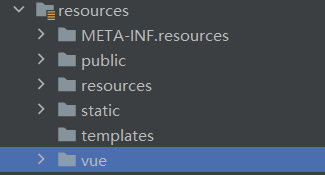
查找静态资源的优先级: 自定义 > /META-INF/resources/ > resources > static > public
- 自定义静态资源的路径,需要在 application.yml 文件中进行配置【多个路径用逗号分隔】
spring:
resources:
static-locations: [classpath:/vue/]
-
请求进来,先去找Controller看能不能处理。不能处理的所有请求又都交给静态资源处理器。静态资源也找不到则响应404页面
- 也就是说: 如果控制器配置了与静态资源同名的请求处理,那么请求就会被控制器拦截
-
使用了自定义的静态资源路径后,原来默认的静态资源路径仍会生效
-
下面为默认路径在源码中的相关体现:
@ConfigurationProperties(prefix = "spring.resources", ignoreUnknownFields = false)
public class ResourceProperties {
private static final String[] CLASSPATH_RESOURCE_LOCATIONS = { "classpath:/META-INF/resources/",
"classpath:/resources/", "classpath:/static/", "classpath:/public/" };
/**
* Locations of static resources. Defaults to classpath:[/META-INF/resources/,
* /resources/, /static/, /public/].
*/
private String[] staticLocations = CLASSPATH_RESOURCE_LOCATIONS;
2、如果一个项目中有很多静态资源,我们如何区分调用它们呢?
-
我们可以为静态资源设置访问前缀
spring: mvc: static-path-pattern: /res/** -
之后我们想要在浏览器发送请求访问我们的静态资源,就要采取 当前项目 + static-path-pattern + 静态资源名 的方式
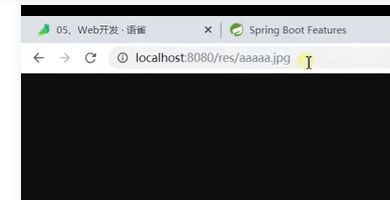
-
如果觉得加上前缀很麻烦,我们可以使用 webjar 来解决:
- 我们需要导入对应的依赖
<dependency> <groupId>org.webjars</groupId> <artifactId>jquery</artifactId> <version>3.5.1</version> </dependency>- 对于webjar依赖中的静态资源,会被映射处理成两种请求路径:
/webjars/**;/static-path-pattern属性值/webjars/**- 所以访问webjars中的静态资源时,静态请求前缀可加可不加
3、SpringBoot 支持欢迎页特性
-
需要我们将欢迎页 index 放到静态资源路径下
-
可以配置额外的静态资源路径,但是不能设置访问前缀,否则我们只能通过 Controller 来处理 /index 请求 【底层源码是这样解释的】
WelcomePageHandlerMapping(TemplateAvailabilityProviders templateAvailabilityProviders, ApplicationContext applicationContext, Optional<Resource> welcomePage, String staticPathPattern) { if (welcomePage.isPresent() && "/**".equals(staticPathPattern)) { logger.info("Adding welcome page: " + welcomePage.get()); this.setRootViewName("forward:index.html"); } else if (this.welcomeTemplateExists(templateAvailabilityProviders, applicationContext)) { logger.info("Adding welcome page template: index"); this.setRootViewName("index"); } } -
我们可以采取下面的方案,来实现添加前缀也能找到Welcome页 【在配置文件中进行配置】
- 欢迎页的处理规则
HandlerMapping:处理器映射。保存了每一个Handler能处理哪些请求。
@Bean
public WelcomePageHandlerMapping welcomePageHandlerMapping(ApplicationContext applicationContext,
FormattingConversionService mvcConversionService, ResourceUrlProvider mvcResourceUrlProvider) {
WelcomePageHandlerMapping welcomePageHandlerMapping = new WelcomePageHandlerMapping(
new TemplateAvailabilityProviders(applicationContext), applicationContext, getWelcomePage(),
this.mvcProperties.getStaticPathPattern());
welcomePageHandlerMapping.setInterceptors(getInterceptors(mvcConversionService, mvcResourceUrlProvider));
welcomePageHandlerMapping.setCorsConfigurations(getCorsConfigurations());
return welcomePageHandlerMapping;
}
WelcomePageHandlerMapping(TemplateAvailabilityProviders templateAvailabilityProviders,
ApplicationContext applicationContext, Optional<Resource> welcomePage, String staticPathPattern) {
if (welcomePage.isPresent() && "/**".equals(staticPathPattern)) {
//要用欢迎页功能,必须是/**
logger.info("Adding welcome page: " + welcomePage.get());
setRootViewName("forward:index.html");
}
else if (welcomeTemplateExists(templateAvailabilityProviders, applicationContext)) {
// 调用Controller /index
logger.info("Adding welcome page template: index");
setRootViewName("index");
}
}
4、我们还可以自定义网站图标
- 只需要把图标文件 favicon.ico 放在静态资源目录下即可
- 需要注意:浏览器的session没关,就是同一次会话,浏览器的访问图标修改后也不会变
5、静态资源的配置原理
- SpringBoot启动默认加载 xxxAutoConfiguration 类(自动配置类)
- SpringMVC功能的自动配置类 WebMvcAutoConfiguration,生效
@Configuration(proxyBeanMethods = false)
@ConditionalOnWebApplication(type = Type.SERVLET)
@ConditionalOnClass({ Servlet.class, DispatcherServlet.class, WebMvcConfigurer.class })
@ConditionalOnMissingBean(WebMvcConfigurationSupport.class)
@AutoConfigureOrder(Ordered.HIGHEST_PRECEDENCE + 10)
@AutoConfigureAfter({ DispatcherServletAutoConfiguration.class, TaskExecutionAutoConfiguration.class,
ValidationAutoConfiguration.class })
public class WebMvcAutoConfiguration {}
- 那么给容器中配置了什么呢?
@Configuration(proxyBeanMethods = false)
@Import(EnableWebMvcConfiguration.class)
@EnableConfigurationProperties({ WebMvcProperties.class, ResourceProperties.class })
@Order(0)
public static class WebMvcAutoConfigurationAdapter implements WebMvcConfigurer {}
-
配置文件的相关属性和xxx进行了绑定。
WebMvcProperties==spring.mvc、ResourceProperties==spring.resources -
在配置类中只有一个有参构造器
//有参构造器所有参数的值都会从容器中确定
//ResourceProperties resourceProperties;获取和spring.resources绑定的所有的值的对象
//WebMvcProperties mvcProperties 获取和spring.mvc绑定的所有的值的对象
//ListableBeanFactory beanFactory Spring的beanFactory
//HttpMessageConverters 找到所有的HttpMessageConverters
//ResourceHandlerRegistrationCustomizer 找到 资源处理器的自定义器。=========
//DispatcherServletPath
//ServletRegistrationBean 给应用注册Servlet、Filter....
public WebMvcAutoConfigurationAdapter(ResourceProperties resourceProperties, WebMvcProperties mvcProperties,
ListableBeanFactory beanFactory, ObjectProvider<HttpMessageConverters> messageConvertersProvider,
ObjectProvider<ResourceHandlerRegistrationCustomizer> resourceHandlerRegistrationCustomizerProvider,
ObjectProvider<DispatcherServletPath> dispatcherServletPath,
ObjectProvider<ServletRegistrationBean<?>> servletRegistrations) {
this.resourceProperties = resourceProperties;
this.mvcProperties = mvcProperties;
this.beanFactory = beanFactory;
this.messageConvertersProvider = messageConvertersProvider;
this.resourceHandlerRegistrationCustomizer = resourceHandlerRegistrationCustomizerProvider.getIfAvailable();
this.dispatcherServletPath = dispatcherServletPath;
this.servletRegistrations = servletRegistrations;
}
2.2 请求参数处理
2.2.1 请求映射
1、rest(一种编程风格)的使用和原理
-
REST 风格支持 使用HTTP请求方式动词来表示对资源的操作
- 以前:/getUser 获取用户 /deleteUser 删除用户 /editUser 修改用户 /saveUser 保存用户
- 现在: /user GET-获取用户 DELETE-删除用户 PUT-修改用户 POST-保存用户
-
正常不支持直接将method设置为 put 和 delete 的表单请求,会默认改为get请求
- 不过我们可以先将表单设置为post请求,再使用一个隐藏参数_method更换为这两个请求
- 手动开启 restful 风格
hidden-method: filter: enabled: true
(1) 编写Mapping映射
@RequestMapping(value = "/user",method = RequestMethod.GET)
public String getUser(){
return "GET-张三";
}
@RequestMapping(value = "/user",method = RequestMethod.POST)
public String saveUser(){
return "POST-张三";
}
@RequestMapping(value = "/user",method = RequestMethod.PUT)
public String putUser(){
return "PUT-张三";
}
@RequestMapping(value = "/user",method = RequestMethod.DELETE)
public String deleteUser(){
return "DELETE-张三";
}
(2) 在欢迎页里编写表单
<form action="/user" method="get">
<input value="REST-GET 提交" type="submit" />
form>
<form action="/user" method="post">
<input value="REST-POST 提交" type="submit" />
form>
<form action="/user" method="post">
<input name="_method" type="hidden" value="put">
<input value="REST-PUT 提交" type="submit" />
form>
<form action="/user" method="post">
<input name="_zbc" type="hidden" value="delete">
<input name="_method" type="hidden" value="delete">
<input value="REST-DELETE 提交" type="submit" />
form>
(3)在 application.yml 中开启restful风格的设定
- 经过测试发送的几个请求都达到了预期效果
- 我们可以在控制器的映射注解中去掉 method,将注解进行替换
- @GetMapping、@PostMapping、@PutMapping、@DeleteMapping
- 可以看到我的post表单还有一个隐藏的属性: _zbc
- 通过创建一个 HiddenHttpMethodFilter 组件,实现将_method 修改为我们指定的内容
package com.atguigu.boot.config;
import org.springframework.context.annotation.Bean;
import org.springframework.context.annotation.Configuration;
import org.springframework.web.filter.HiddenHttpMethodFilter;
/**
* @author Bonbons
* @version 1.0
*/
@Configuration
public class WebConfig {
@Bean
public HiddenHttpMethodFilter hiddenHttpMethodFilter(){
HiddenHttpMethodFilter hiddenHttpMethodFilter = new HiddenHttpMethodFilter();
//修改_method为_zbc
hiddenHttpMethodFilter.setMethodParam("_zbc");
return hiddenHttpMethodFilter;
}
}
2、在使用Rest完成表单提交的原理 【只用于表单提交】
- 表单提交会带上 _method =PUT/DELETE
- 请求过来被HiddenHttpMethodFilter拦截
- 先检查 请求是否正常,并且是POST
- 满足上面的条件再获取到_method的值 【_method 的值可以是 PUT.DELETE.PATCH】
- 原生request(post),包装模式requesWrapper重写了getMethod方法,返回的是传入的值
- 过滤器链放行的时候用wrapper。以后的方法调用getMethod是调用requesWrapper的
需要注意:上面的这个应用原理是针对表单请求而言的,而且在SpringBoot中是通过配置选择开启的
spring:
mvc:
hiddenmethod:
filter:
enabled: true #开启页面表单的Rest功能
3、我们需要了解请求映射的原理
- 这是一个向下继承,层级调用的体现
- 每个请求都被 org.springframework.web.servlet.DispatcherServlet 的 doDispatch()处理
protected void doDispatch(HttpServletRequest request, HttpServletResponse response) throws Exception {
HttpServletRequest processedRequest = request;
HandlerExecutionChain mappedHandler = null;
boolean multipartRequestParsed = false;
WebAsyncManager asyncManager = WebAsyncUtils.getAsyncManager(request);
try {
ModelAndView mv = null;
Exception dispatchException = null;
try {
processedRequest = checkMultipart(request);
multipartRequestParsed = (processedRequest != request);
// 找到当前请求使用哪个Handler(Controller的方法)处理
mappedHandler = getHandler(processedRequest);
//HandlerMapping:处理器映射。/xxx->>xxxx
-
RequestMappingHandlerMapping:保存了所有@RequestMapping 和handler的映射规则
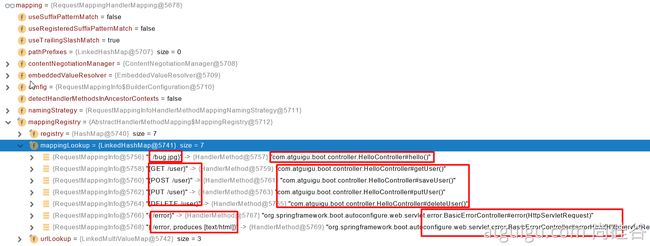
-
所有的请求映射都在HandlerMapping中。
- SpringBoot自动配置欢迎页的 WelcomePageHandlerMapping 。访问 /能访问到index.html;
- SpringBoot自动配置了默认 的 RequestMappingHandlerMapping
- 请求进来,挨个尝试所有的HandlerMapping看是否有请求信息。
- 如果有就找到这个请求对应的handler
- 如果没有就是下一个 HandlerMapping
- 我们需要一些自定义的映射处理,我们也可以自己给容器中放HandlerMapping。自定义 HandlerMapping
protected HandlerExecutionChain getHandler(HttpServletRequest request) throws Exception {
if (this.handlerMappings != null) {
for (HandlerMapping mapping : this.handlerMappings) {
HandlerExecutionChain handler = mapping.getHandler(request);
if (handler != null) {
return handler;
}
}
}
return null;
}
2.2.2 普通参数与基本注解
- 在此部分我将介绍一些底层常用注解,会演示如何使用以及简单的对原理试图理解
1、先介绍@PathVariable、@RequestHeader、@RequestAttribute、@RequestParam、@MatrixVariable、@CookieValue、@RequestBody
- @PathVariable 代表路径变量,使用的形式
@PathVariable("name") String name,用{}代表路径 - @RequestHeader 代表请求头信息,我们可以获取指定的请求头,也可以获取全部的请求头
- @RequestAttribute 代表请求域中的数据,我们可以向请求域添加数据,也可以取数据
- @RequestParam 代表请求参数,我们可以获取到指定的请求参数和全部的请求参数
- @MatrixVariable 代表矩阵变量,在SpringBoot中默认是禁用的,需要我们进行配置,是一种用分号相隔的请求
- @CookieValue 代表Cookie,我们可以获取指定的cookie
- @RequestBody 代表请求体,我们可以获取POST请求的请求体
接下来我们通过具体的代码进行演示
- (1)直接给出了完整的用于发起请求的测试页面: annotation.html
<!DOCTYPE html>
<html lang="en">
<head>
<meta charset="UTF-8">
<title>测试基本注解</title>
</head>
<body>
<!--用户发起GET请求-->
<a href="/car/3/owner/zhangsan?age=18&inters=basket&inters=game">点击发起测试</a>
<!--&age=18&inters=basket&inters=game-->
<!--获取请求的请求体,因为只有post请求才有请求体,所以我们设计一个表单-->
<form action="/save" method="post">
测试RequestBody获取数据 <br/>
用户名 <input name="username" /><br>
邮箱 <input name="email" />
<input type="submit" value="提交">
</form>
<!--测试矩阵变量-->
<a href="/cars/sell;low=32;brand=biyadi,benchi">一个属性对应多个值,采用逗号隔开</a> <br>
<a href="/cars/sell;low=21;brand=aodi;brand=laosilaisi">一个属性对应多个值,采用k=v分号隔开</a> <br>
<a href="/boss/1;age=38/2;age=22">绑定多个路径,存在相同属性</a>
</body>
</html>
- (2)接下来是我们用来处理请求的控制器方法:ParameterTestController.java
package com.atguigu.boot.controller;
import org.springframework.web.bind.annotation.*;
import javax.servlet.http.Cookie;
import java.util.HashMap;
import java.util.List;
import java.util.Map;
/**
* @author Bonbons
* @version 1.0
*
*/
@RestController
public class ParameterTestController {
//结合表单发起POST请求,测试@RequestBody获取请求体
@PostMapping("/save")
public Map postMethod(@RequestBody String context){
Map<String, Object> map = new HashMap<>();
map.put("context", context);
return map;
}
//测试了路径变量、请求体、请求参数、Cookie值
@GetMapping("/car/{id}/owner/{username}")
public Map<String,Object> getCar(@PathVariable("id") Integer id,
@PathVariable("username") String name,
@PathVariable Map<String,String> pv,
@RequestHeader("User-Agent") String userAgent,
@RequestHeader Map<String,String> header,
@RequestParam("age") Integer age,
@RequestParam("inters") List<String> inters,
@RequestParam Map<String,String> params,
@CookieValue("_ga") String _ga,
@CookieValue("_ga") Cookie cookie){
//这里直接运行会产生保存,原因:我没有 _ga 这个@Cookie
Map<String,Object> map = new HashMap<>();
map.put("id",id);
map.put("name",name);
map.put("pv",pv);
map.put("userAgent",userAgent);
map.put("headers",header);
map.put("age",age);
map.put("inters",inters);
map.put("params",params);
map.put("_ga",_ga);
System.out.println(cookie.getName()+"===>"+cookie.getValue());
return map;
}
//测试的是矩阵变量
// 测试/cars/sell;low=31;brand=biyadi,benchi
@GetMapping("/cars/{path}")
public Map carsSell(@MatrixVariable("low") Integer low,
@MatrixVariable("brand") List<Object> brand,
@PathVariable("path") String path){
Map<String, Object> map = new HashMap<>();
map.put("low", low);
map.put("brand", brand);
map.put("path", path);
return map;
}
//针对不同路径有相同属性名的演示
@GetMapping("/boss/{bossId}/{empId}")
public Map boss(@MatrixVariable(value = "age", pathVar = "bossId") Integer bossAge,
@MatrixVariable(value = "age", pathVar = "empId") Integer empAge){
Map<String, Object> map = new HashMap<>();
map.put("bossAge", bossAge);
map.put("empAge", empAge);
return map;
}
}
- 因为矩阵变量默认是禁用的,所以我们需要进行一些配置才能使用矩阵变量的特性
- 方案一:在我们的配置类中利用@Bean注解,将WebMvcConfigurer注册到容器中
@Bean public WebMvcConfigurer webMvcConfigurer(){ return new WebMvcConfigurer() { @Override public void configurePathMatch(PathMatchConfigurer configurer) { UrlPathHelper urlPathHelper = new UrlPathHelper(); //关闭自动移除分号后内容 -- 开启矩阵变量 urlPathHelper.setRemoveSemicolonContent(false); configurer.setUrlPathHelper(urlPathHelper); } }; }- 方案二:我们让配置类实现WebMvcConfigurer接口,然后重写它的 configurerPathMatch方法
@Configuration public class WebConfig implements WebMvcConfigurer{ @Override public void configurePathMatch(PathMatchConfigurer configurer) { UrlPathHelper urlPathHelper = new UrlPathHelper(); urlPathHelper.setRemoveSemicolonContent(false); configurer.setUrlPathHelper(urlPathHelper); } }
2、补充几个知识点
-
@RestController注解声明控制器时,代表将控制器方法的返回值当做数据响应浏览器
- 也就是我们想让控制器方法的返回值作为请求转发,那么只能用普通的 @Controller 声明控制器
-
当浏览器的Cookie被禁用,我们如何获取请求数据呢?
- 通过url重写,可以解决cookie禁用的问题,把cookie的值通过矩阵变量的方式进行传递
2.2.3 ServletAPI
- WebRequest、ServletRequest、MultipartRequest、 HttpSession、javax.servlet.http.PushBuilder、Principal、InputStream、Reader、HttpMethod、Locale、TimeZone、ZoneId
@Override
public boolean supportsParameter(MethodParameter parameter) {
Class<?> paramType = parameter.getParameterType();
return (WebRequest.class.isAssignableFrom(paramType) ||
ServletRequest.class.isAssignableFrom(paramType) ||
MultipartRequest.class.isAssignableFrom(paramType) ||
HttpSession.class.isAssignableFrom(paramType) ||
(pushBuilder != null && pushBuilder.isAssignableFrom(paramType)) ||
Principal.class.isAssignableFrom(paramType) ||
InputStream.class.isAssignableFrom(paramType) ||
Reader.class.isAssignableFrom(paramType) ||
HttpMethod.class == paramType ||
Locale.class == paramType ||
TimeZone.class == paramType ||
ZoneId.class == paramType);
}
2.2.4 复杂参数
- 这部分说的主要是在控制器方法的参数
- Map、Model(map、model里面的数据会被放在request的请求域 request.setAttribute)、Errors/BindingResult、RedirectAttributes( 重定向携带数据)、ServletResponse(response)、SessionStatus、UriComponentsBuilder、ServletUriComponentsBuilder
编写一个两个控制器方法进行测试:
//我们要测试Map、Model、HttpServletRequest、HttpServletResponse 作为参数的效果
@GetMapping("/params")
public String testParams(Map<String, Object> map,
Model model,
HttpServletRequest request,
HttpServletResponse response){
//对于Map、Model、HttpServletRequest 都可以向请求域中添加数据
map.put("hello", "world");
model.addAttribute("world", "hello");
request.setAttribute("message", "HelloWorld");
//创建一个Cookie
Cookie cookie = new Cookie("c1", "v1");
response.addCookie(cookie);
return "forward:/success";
}
@ResponseBody
@GetMapping("/success")
public Map success(@RequestAttribute(name = "msg", required = false) String msg,
@RequestAttribute(name = "code", required = false) Integer code,
HttpServletRequest request){
Map<String, Object> map = new HashMap<>();
//尝试获取我们添加到请求域中的数据
Object hello = request.getAttribute("hello");
Object world = request.getAttribute("world");
Object message = request.getAttribute("message");
map.put("hello", hello);
map.put("world", world);
map.put("message", message);
return map;
}
-
将Map、Model作为参数,相当于调用了RequestAttribute,将参数返回值添加到请求域中
-
请求域参数不是必须的 required = false;
-
为什么 Model 和 Map都是对同一个请求域进行操作呢?
2.2.5 自定义参数
- SpringBoot通过自定义对象参数,可以实现自动类型转换与格式化,并可以级联封装
- 网页携带的数据如果满足某个pojo类,那么就会自动封装成这个pojo的对象
(1) 我们设计的POJO类
package com.atguigu.boot.bean;
import lombok.AllArgsConstructor;
import lombok.NoArgsConstructor;
import lombok.ToString;
import java.util.Date;
import javax.xml.crypto.Data;
/**
* @author Bonbons
* @version 1.0
*/
@lombok.Data
@ToString
@AllArgsConstructor
@NoArgsConstructor
public class Person {
private String name;
private Integer age;
private Date birth;
private Pet pet;
}
package com.atguigu.boot.bean;
import lombok.AllArgsConstructor;
import lombok.NoArgsConstructor;
import lombok.ToString;
/**
* @author Bonbons
* @version 1.0
*/
@lombok.Data
@ToString
@AllArgsConstructor
@NoArgsConstructor
public class Pet {
private String name;
private Integer age;
}
(2) 发起请求的前端表单
<!--自定义对象函数测试-->
<form action="/savePerson" method="post">
姓名:<input name="userName" value="zhangsan"> <br>
年龄:<input name="age" value="18" />
生日:<input name="birth" value= "2002-06-01" />
宠物姓名:<input name="pet.name" value="小花">
宠物年龄:<input name="pet.age" value="2">
<input type="submit" value="保存" />
</form>
(3) Controller 类
@PostMapping("/savePerson")
public Person savePerson(Person person){
return person;
}
-
SpringBoot 之所以可以自动获取表单值封装为指定类型对象,是因为SpringBoot 具有严密的参数解析机制, 但是若我们的输入值SpringBoot 不能解析时,那么应该如何处理呢?
<form action="/savePerson" method="post"> 姓名:<input name="userName" value="zhangsan"> <br> 年龄:<input name="age" value="18" /> 生日:<input name="birth" value= "2002-06-01" /> 宠物:<input name="pet.name" value="小花,2"> <input type="submit" value="保存" /> </form> -
我们可以使用自定义参数封装POJO
- 编写WebConfig类实现WebMvcConfigurer类,重写 addFormatters 方法
package com.example.demo2.config; import com.example.demo2.bean.Pet; import org.springframework.context.annotation.Bean; import org.springframework.context.annotation.Configuration; import org.springframework.core.convert.converter.Converter; import org.springframework.format.FormatterRegistry; import org.springframework.util.StringUtils; import org.springframework.web.servlet.config.annotation.WebMvcConfigurer; @Configuration public class WebConfig implements WebMvcConfigurer{ //1、WebMvcConfigurer定制化SpringMVC的功能 @Bean public WebMvcConfigurer webMvcConfigurer(){ return new WebMvcConfigurer() { @Override public void addFormatters(FormatterRegistry registry) { registry.addConverter(new Converter<String, Pet>() { @Override public Pet convert(String source) { if(!StringUtils.isEmpty(source)){ Pet pet = new Pet(); String[] split = source.split(","); pet.setName(split[0]); pet.setAge(split[1]); return pet; } return null; } }); } }; } }
- 编写WebConfig类实现WebMvcConfigurer类,重写 addFormatters 方法
2.3 参数处理原理
- HandlerMapping中找到能处理请求的Handler(Controller.method())
- 为当前Handler 找一个适配器 HandlerAdapter; RequestMappingHandlerAdapter
- 适配器执行目标方法并确定方法参数的每一个值
1、HandlerAdapter
2、执行目标方法
-
在源码中执行目标方法的核心语句是下面这条:
// Actually invoke the handler. //DispatcherServlet -- doDispatch mv = ha.handle(processedRequest, response, mappedHandler.getHandler()); -
mav 是ModelAndView的对象
mav = invokeHandlerMethod(request, response, handlerMethod); //执行目标方法 //ServletInvocableHandlerMethod Object returnValue = invokeForRequest(webRequest, mavContainer, providedArgs); //获取方法的参数值 Object[] args = getMethodArgumentValues(request, mavContainer, providedArgs);
3、参数解析器 HandlerMethodArgumentResolver
- 要执行目标方法之前,我们需要知道这个方法有哪些参数,它们的值是什么
- SpringMVC目标方法能写多少种参数类型,就取决于参数解析器
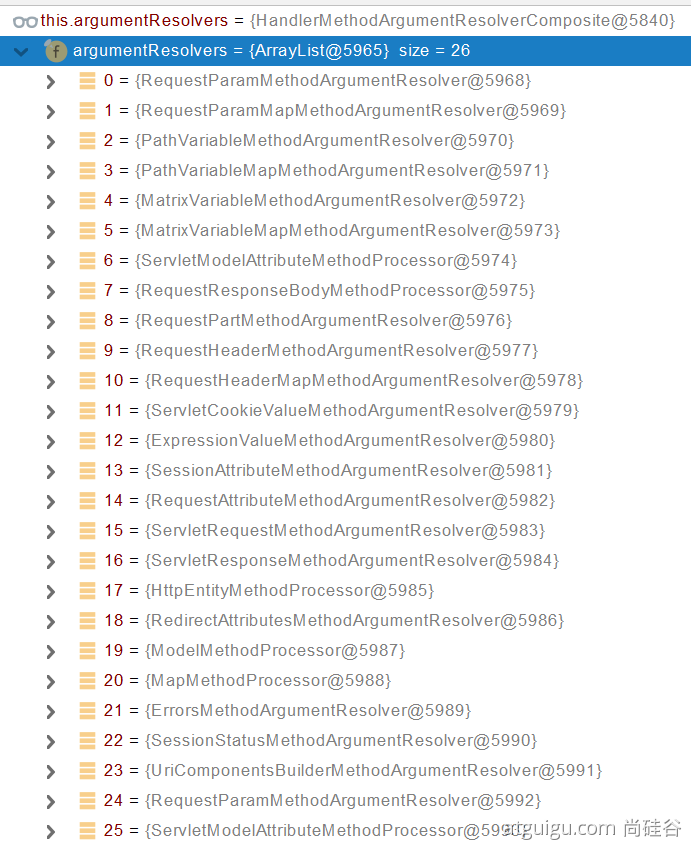
- 底层通过调用resolveArgument判断,这个方法是否支持当前的解析器解析其中的参数
4、返回值处理器
- 通过下面这张图我们可以大概了解一下都会返回什么
5、如何确定目标方法每一个参数的值
- 在源码中是这样描述的
============InvocableHandlerMethod==========================
protected Object[] getMethodArgumentValues(NativeWebRequest request, @Nullable ModelAndViewContainer mavContainer,
Object... providedArgs) throws Exception {
MethodParameter[] parameters = getMethodParameters();
if (ObjectUtils.isEmpty(parameters)) {
return EMPTY_ARGS;
}
Object[] args = new Object[parameters.length];
for (int i = 0; i < parameters.length; i++) {
MethodParameter parameter = parameters[i];
parameter.initParameterNameDiscovery(this.parameterNameDiscoverer);
args[i] = findProvidedArgument(parameter, providedArgs);
if (args[i] != null) {
continue;
}
if (!this.resolvers.supportsParameter(parameter)) {
throw new IllegalStateException(formatArgumentError(parameter, "No suitable resolver"));
}
try {
args[i] = this.resolvers.resolveArgument(parameter, mavContainer, request, this.dataBinderFactory);
}
catch (Exception ex) {
// Leave stack trace for later, exception may actually be resolved and handled...
if (logger.isDebugEnabled()) {
String exMsg = ex.getMessage();
if (exMsg != null && !exMsg.contains(parameter.getExecutable().toGenericString())) {
logger.debug(formatArgumentError(parameter, exMsg));
}
}
throw ex;
}
}
return args;
}
- 挨个判断所有解析器是否支持解析这个参数
@Nullable
private HandlerMethodArgumentResolver getArgumentResolver(MethodParameter parameter) {
HandlerMethodArgumentResolver result = this.argumentResolverCache.get(parameter);
if (result == null) {
for (HandlerMethodArgumentResolver resolver : this.argumentResolvers) {
if (resolver.supportsParameter(parameter)) {
result = resolver;
this.argumentResolverCache.put(parameter, result);
break;
}
}
}
return result;
}
- 然后调用各自 HandlerMethodArgumentResolver 的 resolveArgument 方法即可
- 对于自定义类型参数,会封装成 POJO
public static boolean isSimpleValueType(Class<?> type) {
return (Void.class != type && void.class != type &&
(ClassUtils.isPrimitiveOrWrapper(type) ||
Enum.class.isAssignableFrom(type) ||
CharSequence.class.isAssignableFrom(type) ||
Number.class.isAssignableFrom(type) ||
Date.class.isAssignableFrom(type) ||
Temporal.class.isAssignableFrom(type) ||
URI.class == type ||
URL.class == type ||
Locale.class == type ||
Class.class == type));
}
@Override
@Nullable
public final Object resolveArgument(MethodParameter parameter, @Nullable ModelAndViewContainer mavContainer,
NativeWebRequest webRequest, @Nullable WebDataBinderFactory binderFactory) throws Exception {
Assert.state(mavContainer != null, "ModelAttributeMethodProcessor requires ModelAndViewContainer");
Assert.state(binderFactory != null, "ModelAttributeMethodProcessor requires WebDataBinderFactory");
String name = ModelFactory.getNameForParameter(parameter);
ModelAttribute ann = parameter.getParameterAnnotation(ModelAttribute.class);
if (ann != null) {
mavContainer.setBinding(name, ann.binding());
}
Object attribute = null;
BindingResult bindingResult = null;
if (mavContainer.containsAttribute(name)) {
attribute = mavContainer.getModel().get(name);
}
else {
// Create attribute instance
try {
attribute = createAttribute(name, parameter, binderFactory, webRequest);
}
catch (BindException ex) {
if (isBindExceptionRequired(parameter)) {
// No BindingResult parameter -> fail with BindException
throw ex;
}
// Otherwise, expose null/empty value and associated BindingResult
if (parameter.getParameterType() == Optional.class) {
attribute = Optional.empty();
}
bindingResult = ex.getBindingResult();
}
}
if (bindingResult == null) {
// Bean property binding and validation;
// skipped in case of binding failure on construction.
WebDataBinder binder = binderFactory.createBinder(webRequest, attribute, name);
if (binder.getTarget() != null) {
if (!mavContainer.isBindingDisabled(name)) {
bindRequestParameters(binder, webRequest);
}
validateIfApplicable(binder, parameter);
if (binder.getBindingResult().hasErrors() && isBindExceptionRequired(binder, parameter)) {
throw new BindException(binder.getBindingResult());
}
}
// Value type adaptation, also covering java.util.Optional
if (!parameter.getParameterType().isInstance(attribute)) {
attribute = binder.convertIfNecessary(binder.getTarget(), parameter.getParameterType(), parameter);
}
bindingResult = binder.getBindingResult();
}
// Add resolved attribute and BindingResult at the end of the model
Map<String, Object> bindingResultModel = bindingResult.getModel();
mavContainer.removeAttributes(bindingResultModel);
mavContainer.addAllAttributes(bindingResultModel);
return attribute;
}
-
WebDataBinder binder = binderFactory.createBinder(webRequest, attribute, name);
-
WebDataBinder :web数据绑定器,将请求参数的值绑定到指定的JavaBean里面
-
WebDataBinder 利用它里面的 Converters 将请求数据转成指定的数据类型。再次封装到JavaBean中
-
GenericConversionService:在设置每一个值的时候,找它里面的所有converter那个可以将这个数据类型(request带来参数的字符串)转换到指定的类型(JavaBean – Integer)
byte – > file -
@FunctionalInterfacepublic interface Converter
- 未来我们可以给WebDataBinder里面放自己的Converter;
- private static final class StringToNumber implements Converter
- private static final class StringToNumber implements Converter
- 自定义 Converter
//1、WebMvcConfigurer定制化SpringMVC的功能
@Bean
public WebMvcConfigurer webMvcConfigurer(){
return new WebMvcConfigurer() {
@Override
public void configurePathMatch(PathMatchConfigurer configurer) {
UrlPathHelper urlPathHelper = new UrlPathHelper();
// 不移除;后面的内容。矩阵变量功能就可以生效
urlPathHelper.setRemoveSemicolonContent(false);
configurer.setUrlPathHelper(urlPathHelper);
}
@Override
public void addFormatters(FormatterRegistry registry) {
registry.addConverter(new Converter<String, Pet>() {
@Override
public Pet convert(String source) {
// 啊猫,3
if(!StringUtils.isEmpty(source)){
Pet pet = new Pet();
String[] split = source.split(",");
pet.setName(split[0]);
pet.setAge(Integer.parseInt(split[1]));
return pet;
}
return null;
}
});
}
};
}
6、在目标方法执行完成后
-
将所有的数据都放在 ModelAndViewContainer;包含要去的页面地址View。还包含Model数据
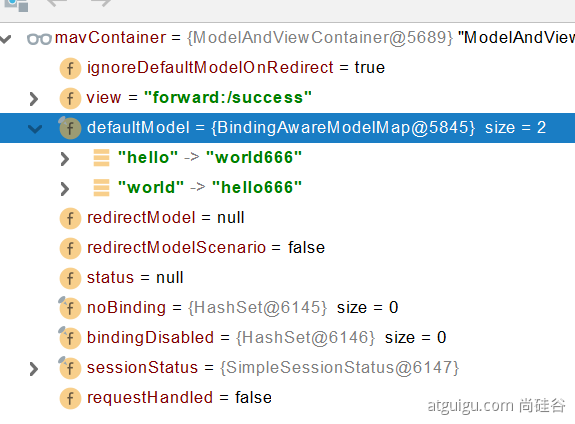
7、最后派发处理结果 -
processDispatchResult(processedRequest, response, mappedHandler, mv, dispatchException);
-
renderMergedOutputModel(mergedModel, getRequestToExpose(request), response);
InternalResourceView:
@Override
protected void renderMergedOutputModel(
Map<String, Object> model, HttpServletRequest request, HttpServletResponse response) throws Exception {
// Expose the model object as request attributes.
exposeModelAsRequestAttributes(model, request);
// Expose helpers as request attributes, if any.
exposeHelpers(request);
// Determine the path for the request dispatcher.
String dispatcherPath = prepareForRendering(request, response);
// Obtain a RequestDispatcher for the target resource (typically a JSP).
RequestDispatcher rd = getRequestDispatcher(request, dispatcherPath);
if (rd == null) {
throw new ServletException("Could not get RequestDispatcher for [" + getUrl() +
"]: Check that the corresponding file exists within your web application archive!");
}
// If already included or response already committed, perform include, else forward.
if (useInclude(request, response)) {
response.setContentType(getContentType());
if (logger.isDebugEnabled()) {
logger.debug("Including [" + getUrl() + "]");
}
rd.include(request, response);
}
else {
// Note: The forwarded resource is supposed to determine the content type itself.
if (logger.isDebugEnabled()) {
logger.debug("Forwarding to [" + getUrl() + "]");
}
rd.forward(request, response);
}
}
暴露模型作为请求域属性
// Expose the model object as request attributes.
exposeModelAsRequestAttributes(model, request);
protected void exposeModelAsRequestAttributes(Map<String, Object> model,
HttpServletRequest request) throws Exception {
//model中的所有数据遍历挨个放在请求域中
model.forEach((name, value) -> {
if (value != null) {
request.setAttribute(name, value);
}
else {
request.removeAttribute(name);
}
});
}
2.3、数据响应与内容协商
- 响应数据用于开发一些前后端分离的项目
1、我们如何实现让浏览器响应JSON数据呢?
- 我们需要引入 web-start 场景,因为里面包含了json的开发场景
- json开发场景引入相关依赖 jackson
- 下面是web场景的依赖:
<dependency> <groupId>org.springframework.boot</groupId> <artifactId>spring-boot-starter-web</artifactId> </dependency> - 下面是Json场景的依赖:
<dependency> <groupId>org.springframework.boot</groupId> <artifactId>spring-boot-starter-json</artifactId> <version>2.3.4.RELEASE</version> <scope>compile</scope> </dependency> - 下面是JSON场景里面关联到的JSON依赖(部分)
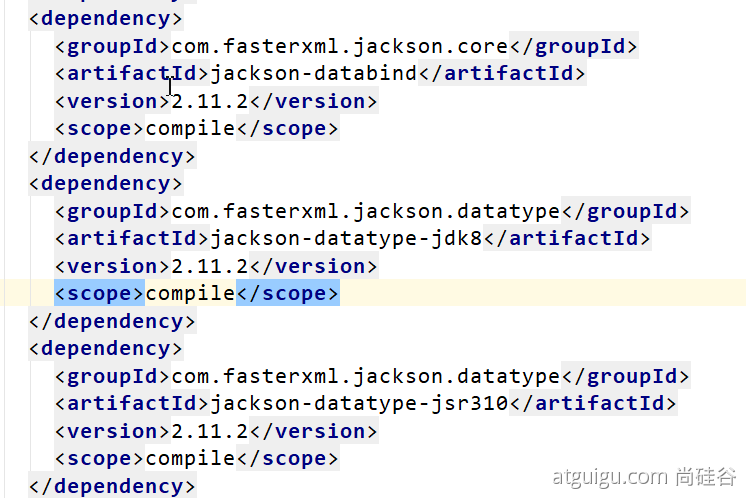
- 完成环境依赖导入后,我们需要在控制器方法上添加 @ResponseBody 注解
- 将方法的返回值,以特定的格式写入到response的body区域,进而将数据返回给客户端
2、引出返回值解析器的概念:
- 在SpringMVC的底层,对于返回值的解析也是采用返回值解析器
- 等待返回值返回后进行处理
- 返回值解析器被放到 invocableMethod 可执行方法里 【返回值解析器总共有15个】
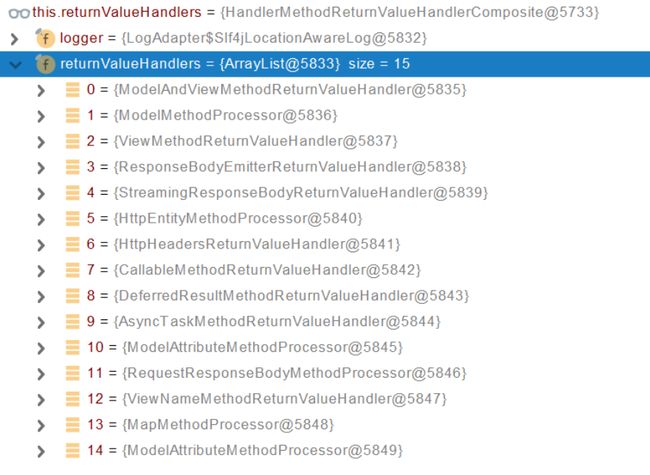
- 调用下面这个方法进行请求处理

- 利用doInvoke反射执行目标方法,得到了返回值 【我们指定返回的person对象】

- 有返回值,并且返回的不是一个字符串,调用handleReturnValue下面的这个处理返回值
try { this.returnValueHandlers.handleReturnValue( returnValue, getReturnValueType(returnValue), mavContainer, webRequest); }@Override public void handleReturnValue(@Nullable Object returnValue, MethodParameter returnType, ModelAndViewContainer mavContainer, NativeWebRequest webRequest) throws Exception { HandlerMethodReturnValueHandler handler = selectHandler(returnValue, returnType); if (handler == null) { throw new IllegalArgumentException("Unknown return value type: " + returnType.getParameterType().getName()); } handler.handleReturnValue(returnValue, returnType, mavContainer, webRequest); }
- 调用下面这个方法进行请求处理
3、那么具体是怎么处理的呢?
(1)先获取返回值和返回值类型,找那个返回值处理器能处理,找到了(handler不为空)就用它处理返回值
@Override
public void handleReturnValue(@Nullable Object returnValue, MethodParameter returnType,
ModelAndViewContainer mavContainer, NativeWebRequest webRequest) throws Exception {
HandlerMethodReturnValueHandler handler = selectHandler(returnValue, returnType);
if (handler == null) {
throw new IllegalArgumentException("Unknown return value type: " + returnType.getParameterType().getName());
}
handler.handleReturnValue(returnValue, returnType, mavContainer, webRequest);
}
- 支持,就调用handleReturnValue处理
4、SpringMVC到底支持哪些返回值
- callable是判断异步的
- 有标了@ModelAttribute&&不是字符串(是个对象才行)
- @ResponseBody 注解 —> RequestResponseBodyMethodProcessor;用这个处理器
ModelAndView
Model
View
ResponseEntity
ResponseBodyEmitter
StreamingResponseBody
HttpEntity
HttpHeaders
Callable
DeferredResult
ListenableFuture
CompletionStage
WebAsyncTask
有 @ModelAttribute 且为对象类型的
@ResponseBody 注解 ---> RequestResponseBodyMethodProcessor;
5、分析RequestResponseBodyMethodProcessor是如何处理的?
- 内容协商就是遍历所有的MessageConverter最终找到一个能处理这个媒体类型数据的
- 内容协商的目的是 在不同的情况下,能够返回不同的内容【我们以xml和jackson为例】
- 支持json我们用的是jackson的工具包,想支持xml我们需要引入对应的依赖 【下面是xml对应的依赖】
<dependency> <groupId>com.fasterxml.jackson.dataformat</groupId> <artifactId>jackson-dataformat-xml</artifactId> </dependency> - 使用postman发送请求时,
*/*代表能接受所有请求 【postman用于模拟浏览器发送请求】- accept请求头用于告诉浏览器我们接收什么样的数据:
- application/json 接收的是json格式的数据
- application/xml 接收的事xml格式的数据
- 这就是在SpringMVC底层提供的非常方便的协商功能
- accept请求头用于告诉浏览器我们接收什么样的数据:
演示一下我们使用PostMan模拟浏览器发送请求
6、说一下内容协商的原理是什么?
-
拿到返回值先判断是不是资源类型,接下来是内容协商的核心环节【判断当前响应头中是否已经有确定的媒体类型。MediaType】
- 没有前置的拦截过程,就不会有媒体类型,有媒体类型说明已经被处理了
- 没有就新创建,有的话就用之前的媒体类型
- 没有前置的拦截过程,就不会有媒体类型,有媒体类型说明已经被处理了
-
然后获取客户端(PostMan、浏览器)支持接收的内容类型。(获取客户端Accept请求头字段)
-
遍历循环所有当前系统的 MessageConverter,看谁支持操作这个对象(Person)
-
找到支持操作Person的converter,把converter支持的媒体类型统计出来。【获得一个集合】
-
用 支持 将对象转为 最佳匹配媒体类型 的converter。调用它进行转化【前俩支持Person -> JSON、后俩支持Person -> XML】
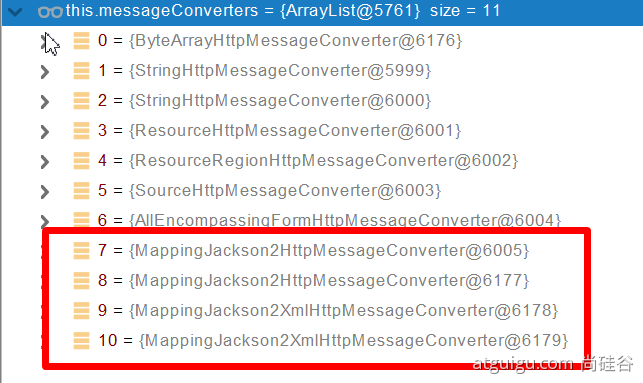
-
导入了jackson处理xml的包,xml的converter就会自动进来
WebMvcConfigurationSupport
jackson2XmlPresent = ClassUtils.isPresent("com.fasterxml.jackson.dataformat.xml.XmlMapper", classLoader);
if (jackson2XmlPresent) {
Jackson2ObjectMapperBuilder builder = Jackson2ObjectMapperBuilder.xml();
if (this.applicationContext != null) {
builder.applicationContext(this.applicationContext);
}
messageConverters.add(new MappingJackson2XmlHttpMessageConverter(builder.build()));
}
- canRead 如果能读就将传递过来的消息读成我们指定的类型,如果canWrite就把我们返回的数据写到我们的响应里面
7、自定义 MessageConverter
- 正常的处理流程:
-
方案一:设计三个方法,让这三种不同的请求的请求路径不一样
-
方案二:就要说到如何自定义converter了
-
我们要定义一个类实现 HttpMessageConverter 接口,在接口中指定规则
package com.atguigu.boot.converter; import com.atguigu.boot.bean.Person; import org.springframework.http.HttpInputMessage; import org.springframework.http.HttpOutputMessage; import org.springframework.http.MediaType; import org.springframework.http.converter.HttpMessageConverter; import org.springframework.http.converter.HttpMessageNotReadableException; import org.springframework.http.converter.HttpMessageNotWritableException; import java.io.IOException; import java.io.OutputStream; import java.util.List; /** * @author Bonbons * @version 1.0 */ public class MyMessageConverter implements HttpMessageConverter<Person> { @Override public boolean canRead(Class<?> aClass, MediaType mediaType) { //读我们指的是通过@RequestBody注解作为参数携带过来的数据,此处我们不关心读 return false; } @Override public boolean canWrite(Class<?> aClass, MediaType mediaType) { //返回值类型是Person类型就能写 return aClass.isAssignableFrom(Person.class); } /** * 服务器要统计MessageConverter能写出哪些类型[兼容的媒体类型] * 我们通过parseMediaTypes将我们自定义类型传递进去 * @return */ @Override public List<MediaType> getSupportedMediaTypes() { return MediaType.parseMediaTypes("application/x-zwh"); } @Override public Person read(Class<? extends Person> aClass, HttpInputMessage httpInputMessage) throws IOException, HttpMessageNotReadableException { return null; } @Override public void write(Person person, MediaType mediaType, HttpOutputMessage httpOutputMessage) throws IOException, HttpMessageNotWritableException { //将我们Person中的数据拼装成一个用分号分隔的字符串 String data = person.getName() + ";" + person.getAge() + ";" + person.getBirth(); //通过输出流将我们的数据写出去 OutputStream body = httpOutputMessage.getBody(); body.write(data.getBytes()); } } -
接下来要到我们的配置类中,重写 extendsMessageConverters 方法
@Override public void extendMessageConverters(List<HttpMessageConverter<?>> converters) { converters.add(new MyMessageConverter()); }
-
-
此时已经可以处理我们自定义请求,此处我通过 PostMan 模拟 【测试成功】
我们需要注意一点:重写那个方法要写在配置类的 WebMvcConfigurer 中
@Bean
public WebMvcConfigurer webMvcConfigurer(){
return new WebMvcConfigurer() {
@Override
public void extendMessageConverters(List<HttpMessageConverter<?>> converters) {
}
}
}
8、如何以参数的方式进行内容协商
-
那么我们是否可以采用基于参数的形式制定自定义协商策略呢?
- 在配置类中自定义WebMvcConfigurer
-
重写 configureContentNegotiation 方法配置协商功能
@Bean public WebMvcConfigurer webMvcConfigurer(){ return new WebMvcConfigurer() { @Override public void configureContentNegotiation(ContentNegotiationConfigurer configurer) { Map<String, MediaType> mediaTypes = new HashMap<>(); //向集合中添加策略 mediaTypes.put("xml", MediaType.APPLICATION_ATOM_XML); mediaTypes.put("json", MediaType.APPLICATION_JSON); mediaTypes.put("gg", MediaType.parseMediaType("application/x-guigu")); //指定支持哪些参数对应的媒体类型 ParameterContentNegotiationStrategy parameterStrategy = new ParameterContentNegotiationStrategy(mediaTypes); configurer.strategies(Arrays.asList(parameterStrategy)); } };
-
- 在配置类中自定义WebMvcConfigurer
-
如果我们现在不进行处理,那么基于请求头的协商策略就会失效(accept无论为什么都会以json的形式返回)
-
我们需要在自定义的协商策略中,添加基于请求头的协商策略
-
也就是将上面这段重写的方法替换为
@Override public void configureContentNegotiation(ContentNegotiationConfigurer configurer) { Map<String, MediaType> mediaTypes = new HashMap<>(); //向集合中添加策略 mediaTypes.put("xml", MediaType.APPLICATION_ATOM_XML); mediaTypes.put("json", MediaType.APPLICATION_JSON); mediaTypes.put("gg", MediaType.parseMediaType("application/x-guigu")); //指定支持哪些参数对应的媒体类型 ParameterContentNegotiationStrategy parameterStrategy = new ParameterContentNegotiationStrategy(mediaTypes); //添加基于请求头的协商策略 HeaderContentNegotiationStrategy headerStrategy = new HeaderContentNegotiationStrategy(); configurer.strategies(Arrays.asList(parameterStrategy, headerStrategy)); }
-
-
几个注意事项:
